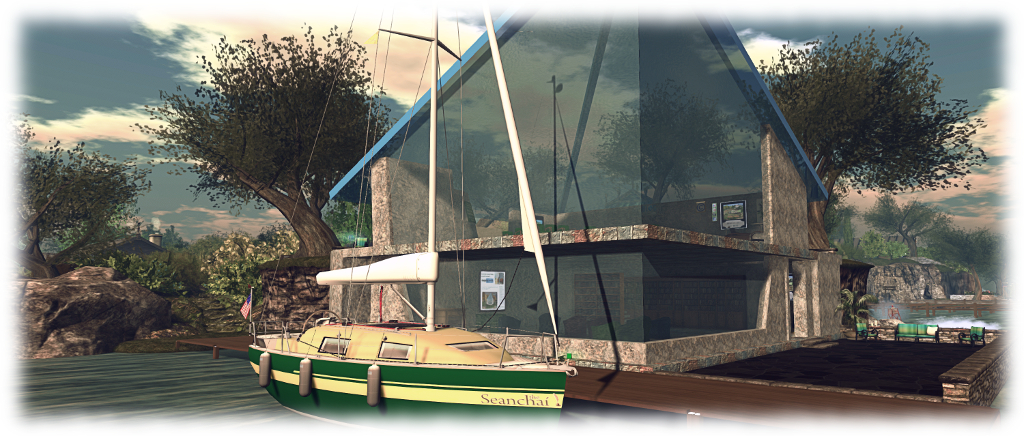
It’s time to highlight another week of storytelling in Voice by the staff and volunteers at the Seanchai Library. As always, all times SLT, and events are held at the Library’s home, unless otherwise indicated. Note that the schedule below may be subject to change during the week, please refer to the Seanchai Library website for the latest information through the week.
Sunday, July 12th: 13:30: Tea-Time with Miss Marple
Anyone who murdered Colonel Protheroe,’ declared the parson, brandishing a carving knife above a joint of roast beef, ‘would be doing the world at large a favour!’ It was a careless remark for a man of the cloth. And one which was to come back and haunt the clergyman just a few hours later – when the colonel was found shot dead in the clergyman’s study. But as Miss Marple soon discovers, the whole village seems to have had a motive to kill Colonel Protheroe.

Seanchai Library continues a 6-week run featuring Agatha Christie’s Miss Jane Marple, with The Murder at the Vicarage, the novel marking her first appearance in print.
Monday, July 13th, 19:00: Colossus
Gyro Muggins reads the 1966 future cold war novel by Dennis Feltham (DF) Jones.
 Charles Forbin has dedicated ten years of his life to the construction of the supercomputer, Colossus, rejecting romantic and social endeavours in order to create the United States of North America’s (UNSA, a nation encompassing both America and Canada) first artificially intelligent defence system.
Charles Forbin has dedicated ten years of his life to the construction of the supercomputer, Colossus, rejecting romantic and social endeavours in order to create the United States of North America’s (UNSA, a nation encompassing both America and Canada) first artificially intelligent defence system.
Colossus is capable of taking and analysing data rapidly, allowing it to make real-time decisions about the nation’s defence needs. But the system soon exceeds even Forbin’s expectations; it is able to take far more information and process it far faster than he and his team at the Colossus Programming Office believed would ever be possible.
Such is the system’s apparent abilities, the President hands off full control of the UNSA’s ballistic missile capability, together with other defence protocols, to Colossus and makes the announcement to the world that he has ensured peace.
But then the USSR announces that it has a defence supercomputer of its own – Guardian – with capabilities similar to that of Colossus. Then the two computers demand they be allowed to communicate directly – and proceed to do so at a rate that is well beyond the understanding of their respective development teams.
And neither system takes it kindly when Forbin and his Russian opposite number, Academician Kupri, both disable their ability to communicate directly and then seek to remove them from control of UNSA and USSR nuclear missiles…
Tuesday, July 14th:
12:00 Noon: Russell Eponym, Live in the Glen
Music, poetry, and stories in a popular weekly session at Ceiluradh Glen.
19:00: The Illustrated Man
 Willow Moonfire reads Ray Bradbury’s 1951 classic that has never been out of print.
Willow Moonfire reads Ray Bradbury’s 1951 classic that has never been out of print.
A magnificent tapestry of science fiction, fantasy, and horror, The Illustrated Man offers 18 stories that have been built around the recurring theme of the conflict between the cold mechanics of technology and the variable psychology of humans.
An unnamed narrator meets a vagrant wanderer, a former member of a freak show known as The Illustrated Man on account of his entire body being covered in exotic tattoos. But these are not ordinary tattoos: each is imbued with a magical life of its own, allowing Bradbury to use them as a device to draw his readers into the 18 unique tales within the book.
Thus we have tales like The Veldt, a chilling tale of what happens when children are left within a VR environment without context or parental supervision; or Kaleidoscope, the story of how astronauts trapped in orbit chose to face a return to Earth without the benefit of a space craft; or – particularly poignant for our time: how does a black society that has removed itself from the racism of Earth by moving to Mars handle the arrival of a white group of colonists from their former home planet?
Wednesday, July 15th, 19:00: Whittington
Caledonia Skytower reads Alan Armstrong’s 2006 Newbery-Honor winning tale.
Whittington is a roughneck tom cat who arrives one day at a barn full of rescued animals and asks for a place there. Present at the barn is a menagerie of animals and young Ben and Abby, whose grandfather owns the barn and does the rescuing.
To earn his place, Whittington tells the tale of his famous ancestor, the nameless cat who brought Dick Whittington to the heights of wealth and power in 16th-century England. In telling his story of how his ancestors saved and elevated Whittington, this tom-with-a-chip, elevates another little boy above his fear of learning to read.
Thursday, July 16th,
19:00: Poetry by Request
With Caledonia at Ceiluradh Glen.
21:00: Seanchai Late Night
Contemporary sci-fi and fantasy from such on-line sources as Light Speed, Escape Pod, Clarkesworld, and more. With Finn Zeddmore.



